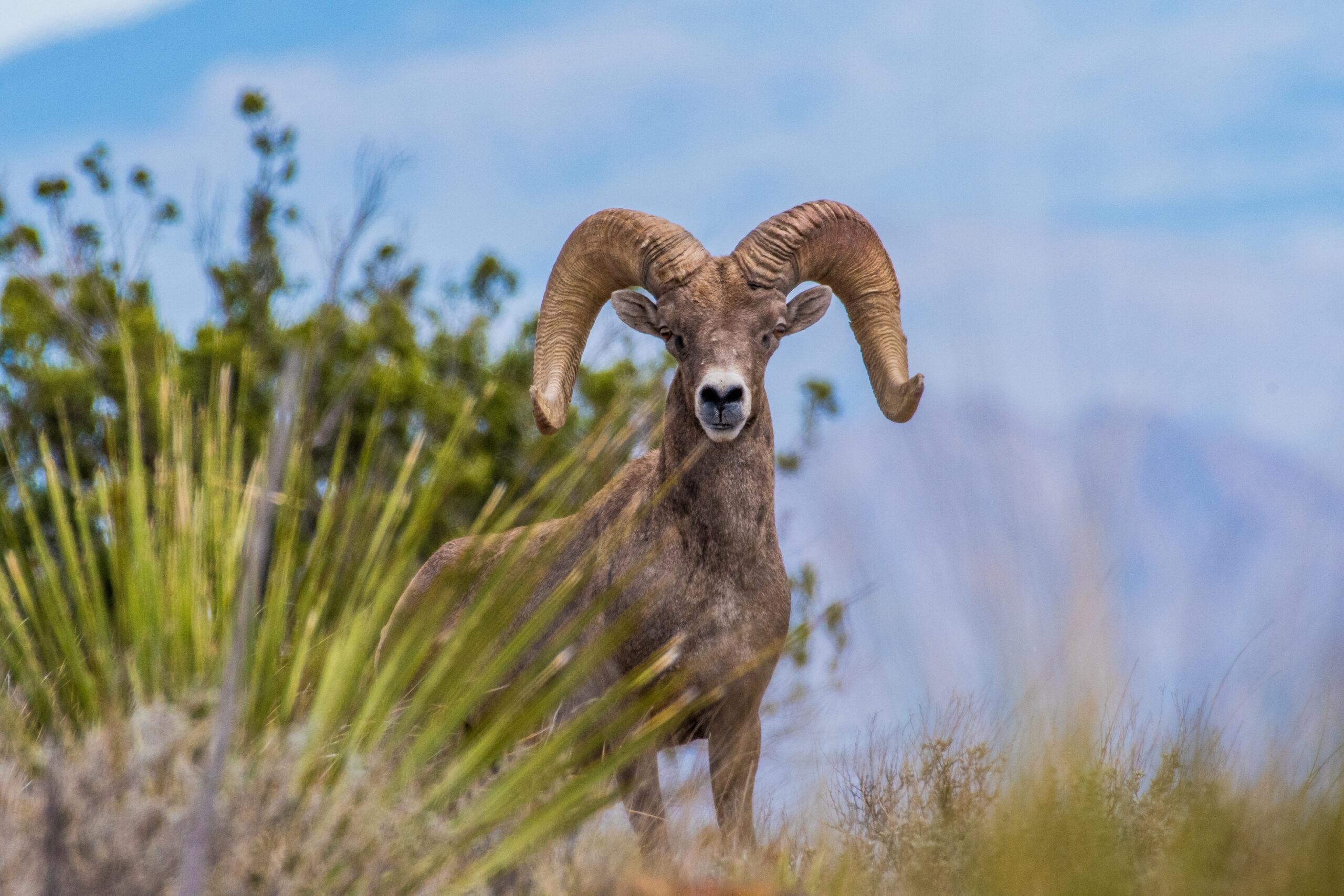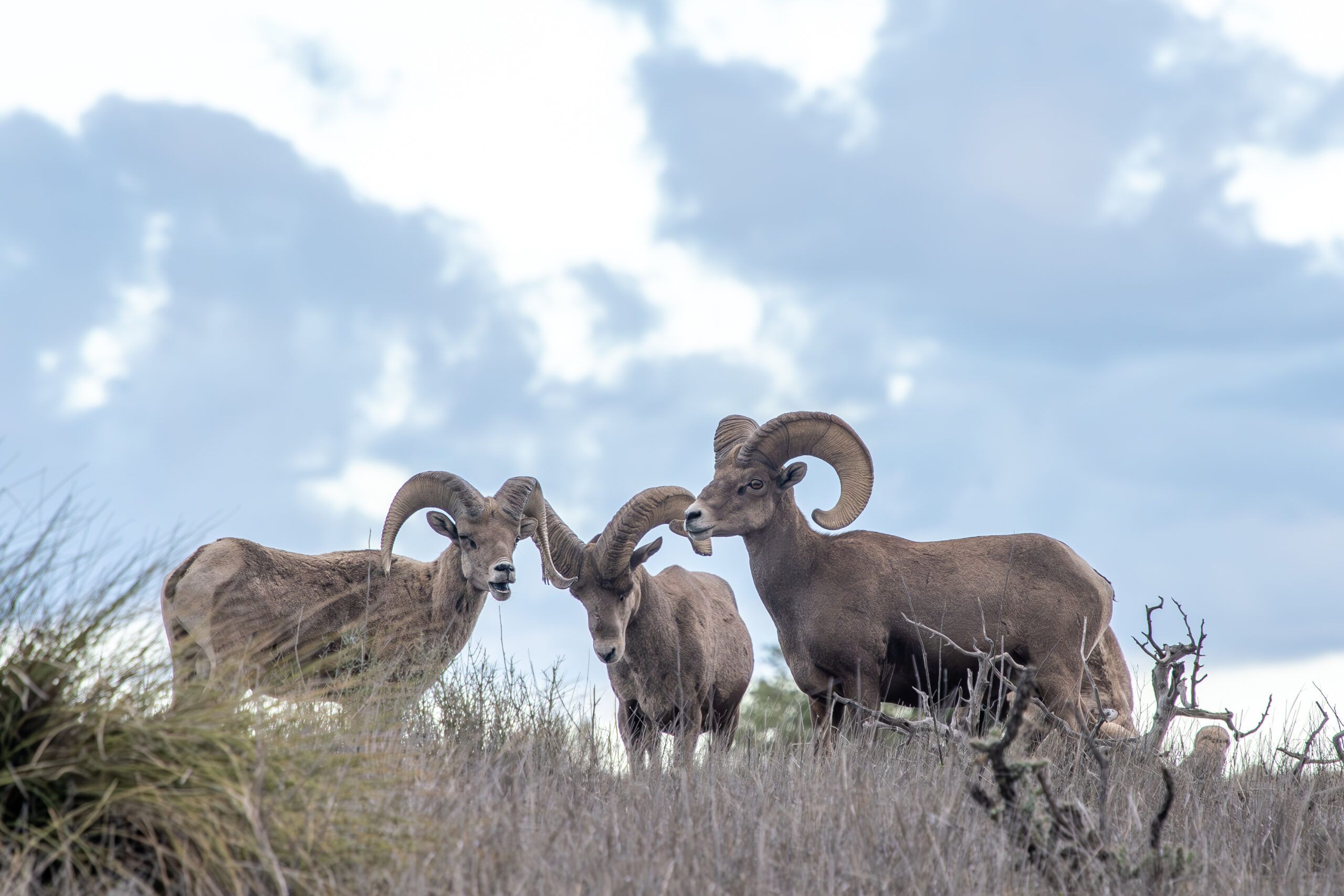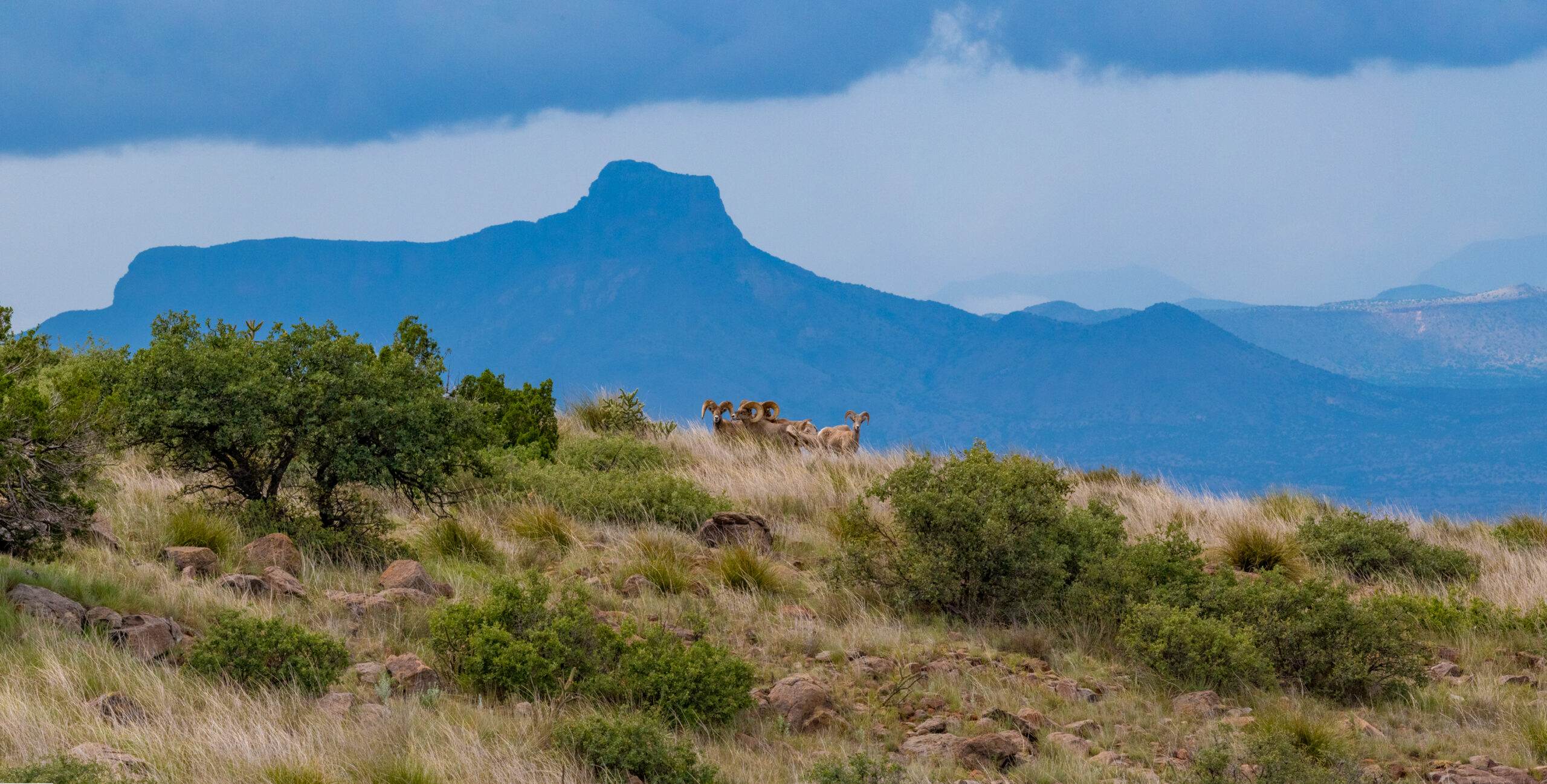
Desert bighorn sheep in Texas are facing multiple threats, and Texas Parks and Wildlife Foundation (TPWF) is bringing together a coalition of trusted conservation partners and other dedicated Texans to ensure the continued survival of this iconic king of the Trans-Pecos mountains.
Though desert bighorn sheep were hailed not long ago as one of the most celebrated conservation success stories in the state’s history, Texas Parks and Wildlife Department (TPWD) biologists have documented a 50 percent decline in population since 2021. The primary cause for the decline is pneumonia, caused by the bacterium Mycoplasma ovipneumoniae, (M. ovi). Often associated with domestic sheep and goats, M. ovi is also found in West Texas’ exploding population of exotic aoudad sheep.
The aoudads are merely carriers, experiencing virtually no ill effects. Bighorns, however, are highly susceptible to M. ovi, with deadly consequences. Outnumbered and defenseless, only geographical features separate them from their fate. A single infected aoudad intermingling with bighorns could infect the entire herd.
Now researchers, wildlife biologists, landowners and many others are searching for answers to this complicated problem. It’s worth reflecting on the history of bighorn sheep in Texas as we prepare to write the next chapter of this epic conservation story.

Majestic bighorn sheep have likely roamed the far-flung mountain ranges of West Texas for tens of thousands of years. The first people who existed in this rugged landscape chronicled their fascination with the iconic animal in the rock art they left behind. As pioneers began settling the area in the 1880s, they brought domestic livestock to try and make a living in a forbidding landscape. This was a time before wildlife conservation was studied — there was little understanding of the impact of unregulated hunting or overgrazing on wildlife populations.
By the late 1800s, an estimated 1,500 bighorn sheep roamed West Texas, but those populations were extirpated from much of their historic range by the turn of the century. In 1905, Vernon Bailey conducted a landmark survey of wildlife populations in Texas. He described 16 mountain ranges that supported bighorns and estimated the population at 500 animals, which declined to only 35 in the mid-1940s. The last documented sighting of a native Texas bighorn occurred in October 1958 on Sierra Diablo WMA. Restoration efforts began in 1954, and the initial effort involved propagating desert bighorn sheep in captivity to provide a source of stock for transplanting into suitable habitat. The Chilicote Ranch, then owned by the father of longtime TPWF Board Trustee L. Robin French, III, was the location of one of several successful propagation facilities. These dedicated efforts continued for decades, resulting in the transplantation of more than 800 bighorns in the Trans-Pecos. Through the concerted efforts of West Texas landowners working with TPWD, Texas Bighorn Society, Wild Sheep Foundation and other conservation organizations — all funded by hunters — bighorn sheep were successfully restored to the landscape they once roamed.
Aoudads and M. ovi are threatening that success. Today a multi-pronged effort is underway to get a handle on the complicated aoudad dynamic. Aoudad were first introduced at Palo Duro Canyon by TPWD’s precursor agency in the late 1950s. In subsequent decades, they were stocked on private land all over Texas.

Texas Parks and Wildlife Foundation (TPWF) is proud to be a part of the desert bighorn solution, bringing in Clay Brewer, a familiar face in West Texas wildlife circles and beyond. He is working hand in hand with TPWD, Borderlands Research Institute at Sul Ross State University, landowners, and many others to help formulate a science-based plan of action. A working group of stakeholders will be formed, and a landowner symposium is slated for this spring.
This past December, TPWD successfully translocated bighorn sheep from Elephant Mountain near Alpine to the Franklin Mountains in El Paso. The herd on Elephant Mountain has been documented free of disease, and there are no aoudad present in the Franklin Mountains. Stakeholders hope this move will guarantee M. ovi disease protection for at least one herd of bighorn in Texas.
“All of us who are passionate about bighorn sheep conservation in Texas need to pull in the same direction,” said Brewer. “We need to make sure we are all working together to do the right thing for the resource. That was the key to success before. How well we can come together now will determine the future of bighorn sheep in Texas.”




